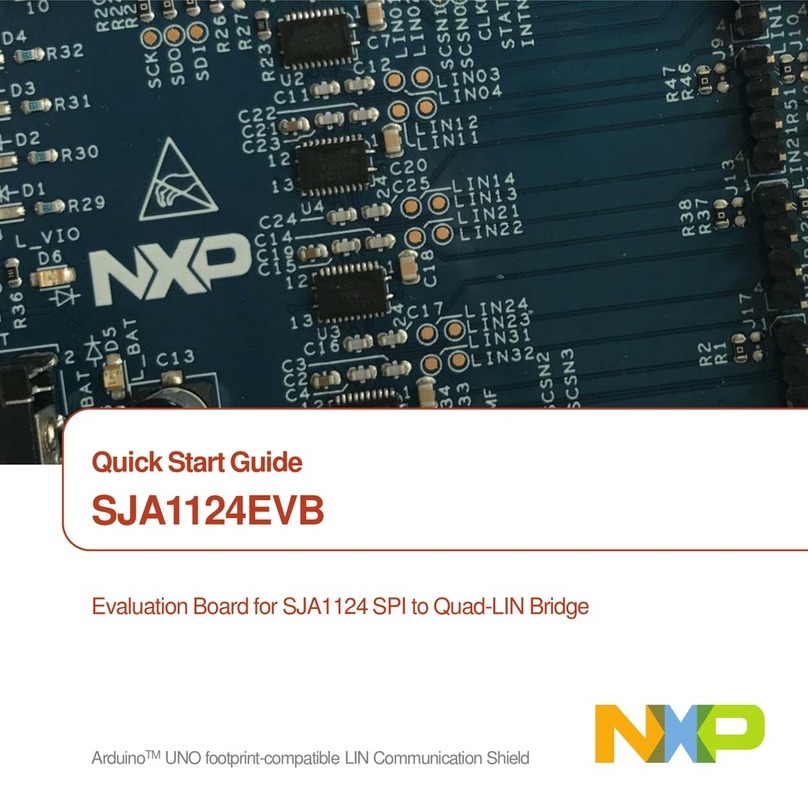
UM10413 All information provided in this document is subject to legal disclaimers. © NXP B.V. 2011. All rights reserved.
User manual Rev. 1 — 16 December 2011 5 of 268
NXP Semiconductors UM10413
MPT612 User manual
AHB peripherals are allocated a 2 MB range of addresses at the top of the 4 GB ARM
memory space. Each AHB peripheral is allocated a 16 kB address space within the AHB
address space. Apin connect block controls on-chip peripheral connections to device pins
(see Section 12.4 “Register description” on page 62) configured by software to specific
application requirements for the use of peripheral functions and pins.
5.1 ARM7TDMI-S processor
The ARM7TDMI-S is a general purpose 32-bit processor core offering high performance
and very low-power consumption. The ARM architecture is based on Reduced Instruction
Set Computer (RISC) principles making the instruction set and decode mechanisms much
simpler than micro programmed Complex Instruction Set Computers (CISC). This
simplicity results in a high instruction throughput and impressive real-time interrupt
response from a small, cost-effective processor core.
Pipeline techniques are employed ensuring all parts of the processing and memory
systems can operate continuously. Typically, while one instruction is being executed, its
successor is being decoded and a third instruction is being read from memory.
The ARM7TDMI-S processor also employs a unique architectural strategy known as
Thumb making it suitable for high-volume applications with memory restrictions, or
applications where code density is an issue.
The key idea behind Thumb is a super-reduced instruction set. Essentially, the
ARM7TDMI-S processor has two instruction sets:
•the standard 32-bit ARM set
•the 16-bit Thumb set
The Thumb 16-bit instruction sets allow up to twice the density of standard ARM code
while retaining most of the performance advantage of ARM over a traditional 16-bit
processor using 16-bit registers, made possible using the ARM code 32-bit register set.
Thumb code provides up to 65 % of standard ARM code and 160 % of the performance of
an equivalent ARM processor connected to a 16-bit memory system.
The particular flash implementation in the MPT612 also allows full speed execution in
ARM mode. Programming performance-critical and short code sections in ARM mode is
recommended. The impact on the overall code size is minimal but the speed can increase
by 30 % over Thumb mode.
5.2 On-chip flash memory system
The MPT612 incorporates a 32 kB flash memory system. This memory can be used for
both code and data storage. Various methods can be used to program flash memory, such
as using:
•the built-in JTAG interface
•In Systems Programming (ISP)
•UART
•In Application Programming (IAP)





























